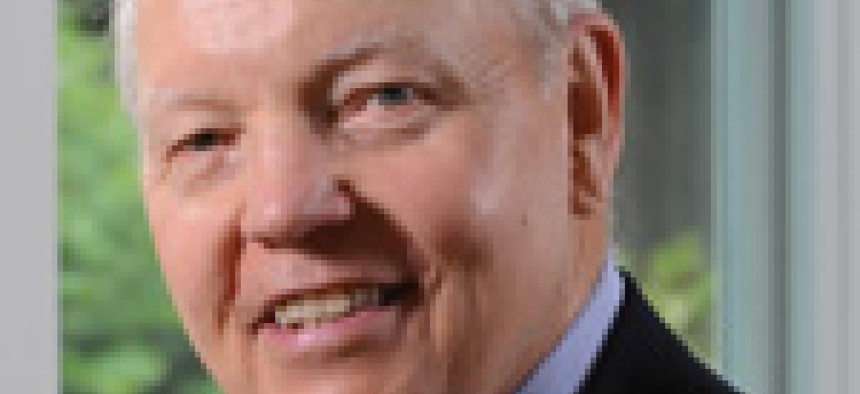John Koskinen: Y2K revisited

John Koskinen helped the U.S. brace for Y2K -- and in doing so changed federal IT.
For Federal Computer Week's 25th anniversary issue, we highlight some of the people, policies and technologies that have influenced federal IT. Although it is not possible to include all the dynamic and dedicated people who have been or still are a part of this marketplace, we start with some who have left their mark.
Twelve years later, the Year 2000 date change panic that riveted the public and government leaders seems like something out of a disaster movie. But in the late 1990s, there were real fears that the computer systems that supported our modern infrastructure — from banking and air traffic control to defense systems — would fail when their digital clocks flipped over on January 1, 2000.
In the United States, that race against time was led by John Koskinen, an Office of Management and Budget executive selected to lead President Bill Clinton’s Council on Year 2000 Conversion.
It was more than a technical remediation effort, though that alone was daunting. For example, the Defense Department had more than 2,300 systems deemed mission critical that needed to be fixed, tested and reinstalled. Koskinen’s group also had to overcome hurdles related to legislation, liability laws and competing priorities — and had less than two years to do it in.
“On New Year’s Eve, we had 100 information desks set up” in the coordination center, Koskinen said. “Madeleine Albright, then secretary of State, came by and said, ‘Geez, you could run the world from here.’ I said, ‘Well, we might have to.’”
Although some people debate how pervasive the problems might have been if the remediation efforts hadn’t happened, it is undeniable that the transition was handled smoothly despite the many obstacles. Colleagues credit Koskinen’s leadership, vision and knack for bringing people together.
“This was the first major problem that federal CIOs had to work on together, and that experience continues to serve today as CIOs deal with cybersecurity, information sharing or moving to the cloud,” said Bruce McConnell, senior cybersecurity counselor at the Homeland Security Department and former Y2K council member. “That sense of collaboration that John achieved has helped the community continue to work together.”
“Through this process, we helped give focus to the function of managing IT and thinking about it strategically,” said Janet Abrams, executive director of the Y2K council. “It was a really great model, and there’s a lasting impact.”
These days, threats to global systems are greater than they were in the 1990s, Koskinen said, but that shouldn’t keep us from constantly pushing those boundaries.
“IT continues to give the capacity to do thing faster, more efficiently and more effectively,” he said. “It’s important for IT leaders to continue to focus on making information as easily available to the public as possible. We want to be at the cutting edge… It’s tough, but if I were a CIO, that’s what I’d be focused on.”





